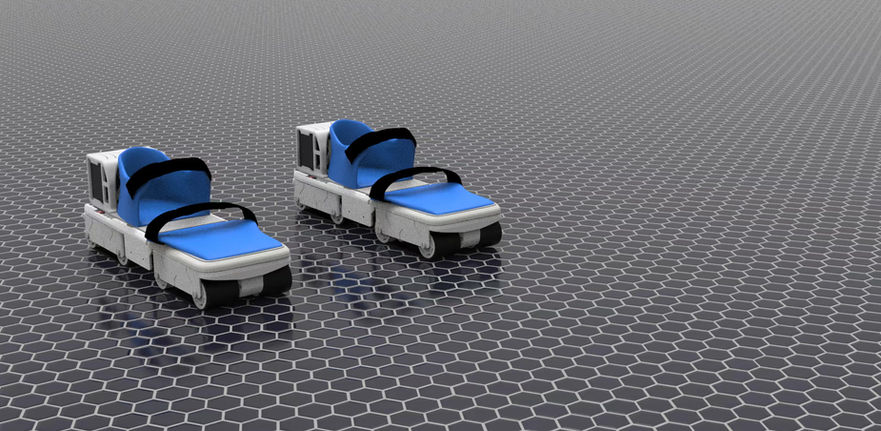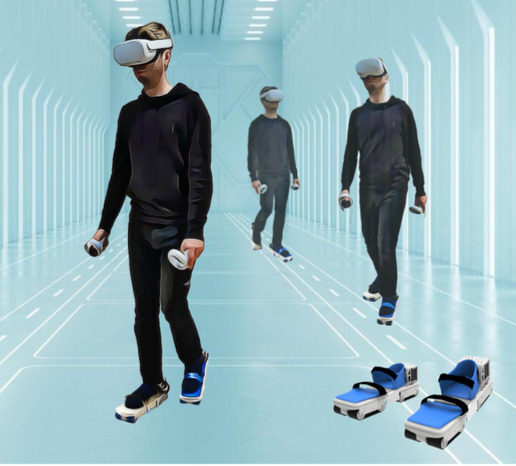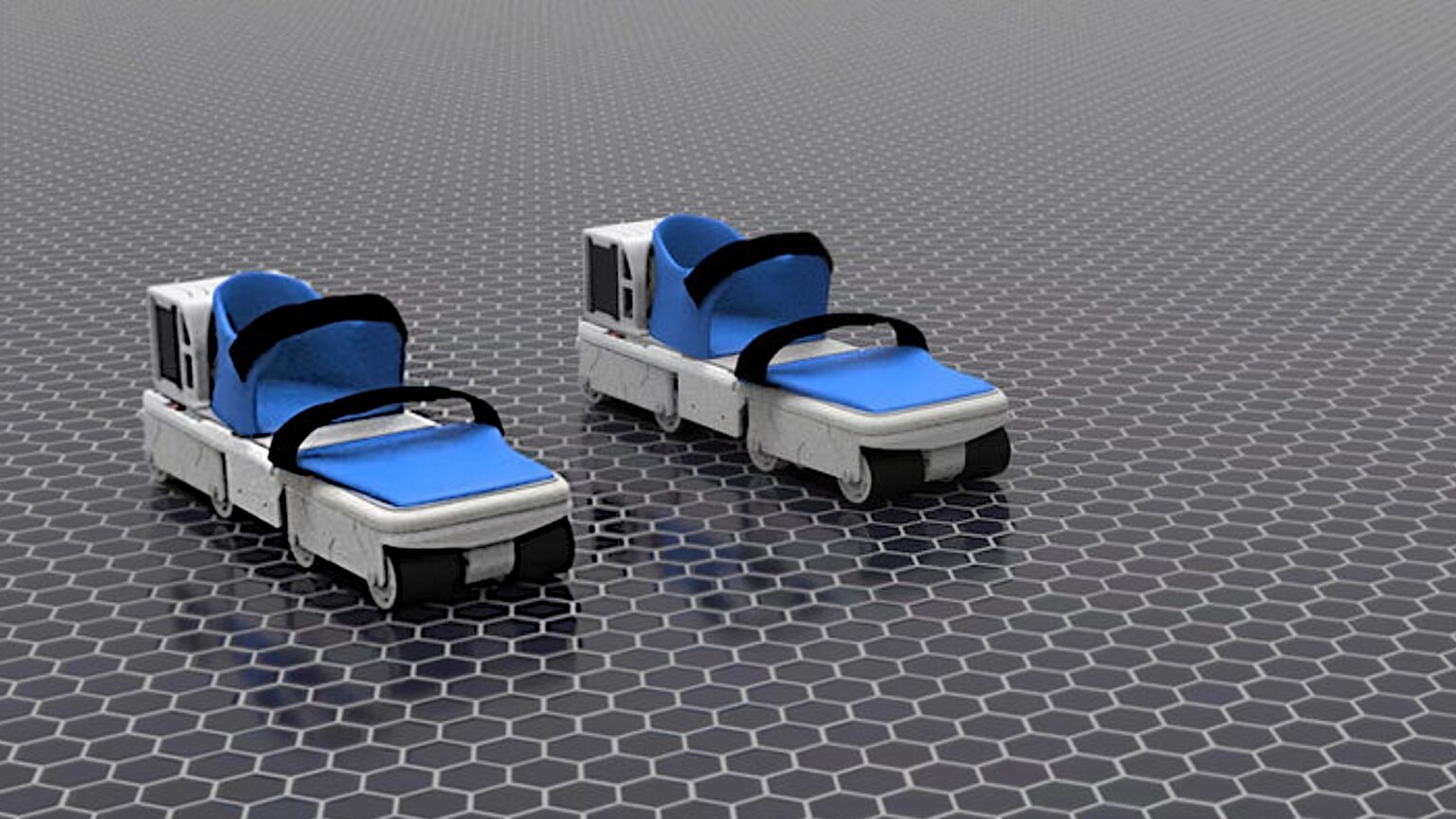UK tech startup Freeaim Technologies is testing wearable shoes that enable users to walk “infinite distances in virtual reality (VR) in any direction” while staying within a small play space.
Dubbed ‘Freeaim VR Shoes,’ the device uses AI-powered motorized treadmills under the feet to help people move around in the virtual world. The treadmills track your every step, thanks to a network of sensors that read user intentions and adjust the terrain in real-time.
“The main purpose of the VR shoes is to keep you inside a small area, while in VR you have total freedom of movement, essentially turning a small area into an infinite area,” said CEO Ashley Foxcroft.
Also read: Here’s How ‘Metaverse Sex’ Could Replace Porn Apps and Websites
What can the VR shoes do?
Virtual reality is a simulated environment, often accessed via VR headsets, like Meta’s Quest range of headgear, or other devices. The technology allows users to immerse themselves in a different world or scenario, which can either be realistic or imagined.
VR is one of the platforms that people use to enter the metaverse, a network of interconnected virtual worlds where users can meet, work, and interact. A key challenge for VR is how to move around in virtual worlds without breaking the immersion or feeling sick.
According to Foxcroft, many of the VR systems in existence today use motorized treadmill-type devices to simulate walking. But they are very complex, huge, and costly, with one reportedly going for as much as $50,000. They also cause motion sickness, he says.

Foxcroft’s company aims to solve this problem with its Freeaim VR Shoes, its flagship product. The CEO, who has been working on the VR shoes since 2018, told Simulation Magazine earlier this year that he wants to cut the price of existing VR treadmills by 90%.
“We believe our VR Shoes will provide a much-needed, far better solution to natural walking and movement for VR that is affordable, compact, easier to use, and most importantly, fun and immersive,” Foxcroft said in a release.
He added that he believes the shoes “will become the next important VR accessory alongside Haptic gloves.”
“The VR shoes do the opposite of whatever you might do while walking around and in any direction. Each VR shoe is like a small autonomous robot that can handle the entire weight of a human while walking, and it’s fully wireless too,” he says.
The VR shoes are omni-directional, meaning they can move to the sides without the user noticing, said Foxcroft. Without this ability, the user would gradually drift away from where they started due to the many little steps or side-steps taken as they moved around.
“The VR shoes are constantly correcting the position of the user; like gravity, they are always moving the user back to where they started,” Foxcroft explained.
It is a complex endeavor. Even he admits that the concept “can be hard to explain,” deferring to demonstration videos posted on YouTube, where users can see the shoes at work for themselves.
Testing the shoes
London-based Freeaim Technologies built a prototype of its VR shoes, but it has yet to go commercial. The device was initially expected to hit the market this year, the startup said in May. The release now appears to have been pushed back to a later date.
A report by the Chainsaw suggested that pre-orders for the shoes are now open, starting at a price of $499. Freeaim did not respond to a request for comment from MetaNews.
On its website, Freeaim says that the VR shoes “do not roll or slide” and “feel like walking on a gym treadmill.” The company claims to have “safety checks built-in throughout” the device, which comes with swappable batteries for “continuous use.”
The latest version of the shoes is compatible with most virtual reality headsets on SteamVR and works with games or apps that involve moving around. Ashley Foxcroft said the shoes have been tested in gaming environments like the open-world space sim No Man’s Sky, Half Life Alyx, and an FPS game called Pavlov.
“We have also been testing VR apps that are used for training, such as ‘Aircraft Ground Handling Simulator’, which is used for training people to work around aircraft, which you will have seen in the first video,” he said during the Simulation Magazine interview.
Foxcroft also spoke about how the device could help people “not keen on going to the gym” exercise within familiar environments in an immersive and interactive way. On privacy, he said the shoes did “collect a lot of data,” but “with permission from the user.”
The company uses this information to “perform data analytics to improve the system,” Foxcroft stated, adding, “We can already measure people’s weight and their patterns of walking (gait), and we plan to do so much more with this data.”
“The way the VR shoes behave at the moment can be controlled by the user, and we will probably have a beginner mode and an experienced mode that adjusts key parameters like acceleration,” he says.
Walking in the metaverse
VR shoes with haptic feedback could bring a new level of realistic movement for people navigating the metaverse, who, until recently, appeared as legless avatars.
However, users might have to part with an arm and a leg to do so, taking into account the combined cost of buying a VR headset ($500 for Meta Quest 3) and possibly another $500 for the shoes.
Freeaim is not the first company to develop virtual reality shoes. There have been many attempts by others to solve VR locomotion, tech industry-speak for full body movement, and control solutions.

Cybershoes developed a pair of shoes that only work sitting down on a stool that swivels around. The shoes feature some small wheels underneath that measure speed so you can move in VR. Since the user cannot stand-up, the shoes “severely limit what they can be used for,” said Foxcroft.
Another company Kat VR built a large plastic disk with a support harness and wears up to 65kg. The device, KatwalkC, works by holding the upper body in place so the user can slide their feet with low friction shoes.
Foxcroft said he bought the KatwalkC, which costs up to £2,000 (~$2,550), for research purposes. He criticized the device as bulky and inconvenient. He said it does not “work well.”
“It’s like when you first learn to roller-skate or ice-skate, it’s hard to control and it doesn’t feel like walking,” he complained.









 and then
and then